
Bell Island, Newfoundland
Division No. 1, est. 2,224 residents
Bell Island is a small island located in Conception Bay, Newfoundland. The island’s first permanent resident is often credited to Gregory Normore in 1740. Newfoundland and Bell Island specifically became the backbone of a growing nation, with people travelling from far and wide to work in their fishing and mining industries.
First known as “Great Bell Isle,” there are three small communities that make up the whole of the island, the largest of them being Wabana. Wabana grew in size during the 1890s when the Wabana Iron Ore Mines first began operations.
It was the Butler family from Port de Grave that first staked mining claims on the north side of the island before they were sold to the Nova Scotia Steel Company. The mining area was named Wabana by Thomas Cantley, an official with the Nova Scotia Steel Company.
Bell Island was once a thriving area. At its peak, the island had around 12,000 residents. There were once around a hundred businesses open during Bell Island’s highest population years, including 14 schools, six churches, four halls, three hotels, over 30 shops, two theatres, a bank, a hospital and an arena.
A Mining Town
Mining began on Bell Island in 1895. Around 160 miners were employed, most either native to Bell Island or from the surrounding area of Portugal Cove. In December 1895, the first shipment of iron ore left Bell Island for Nova Scotia. Other smaller shipments went to the United States, Scotland, and Germany.
In 1899, a portion of the Scotia Company’s mining rights was sold to the Dominion Steel Company. This move introduced the growth of the steel industry in Nova Scotia that was based upon the shipments of iron ore from Bell Island. By 1903, the lack of surface ore forced the two companies mining ore from Wabana to begin underground mining. New infrastructure was also being built to introduce submarine mining over the next few years.
Bell Island’s mining drove the local economy, and by 1923 Bell Island was the second-largest community in Newfoundland.
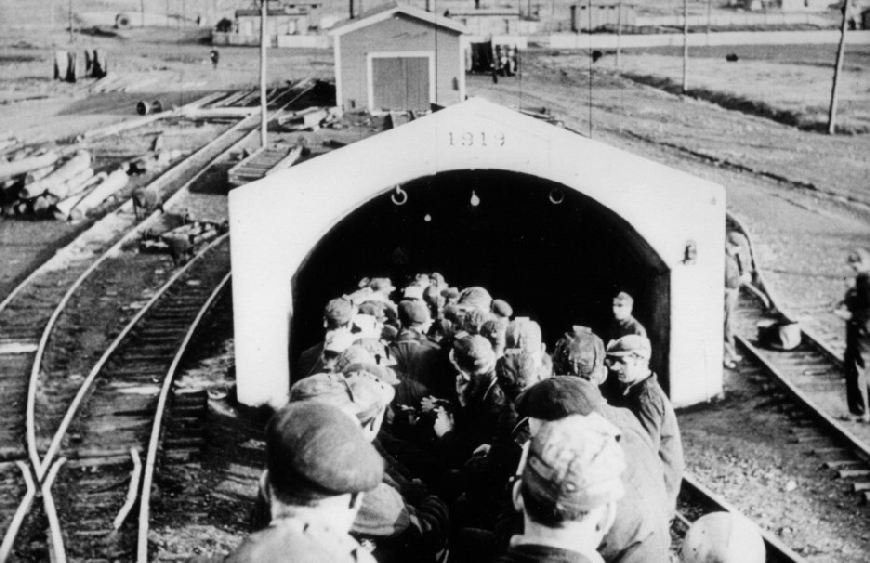
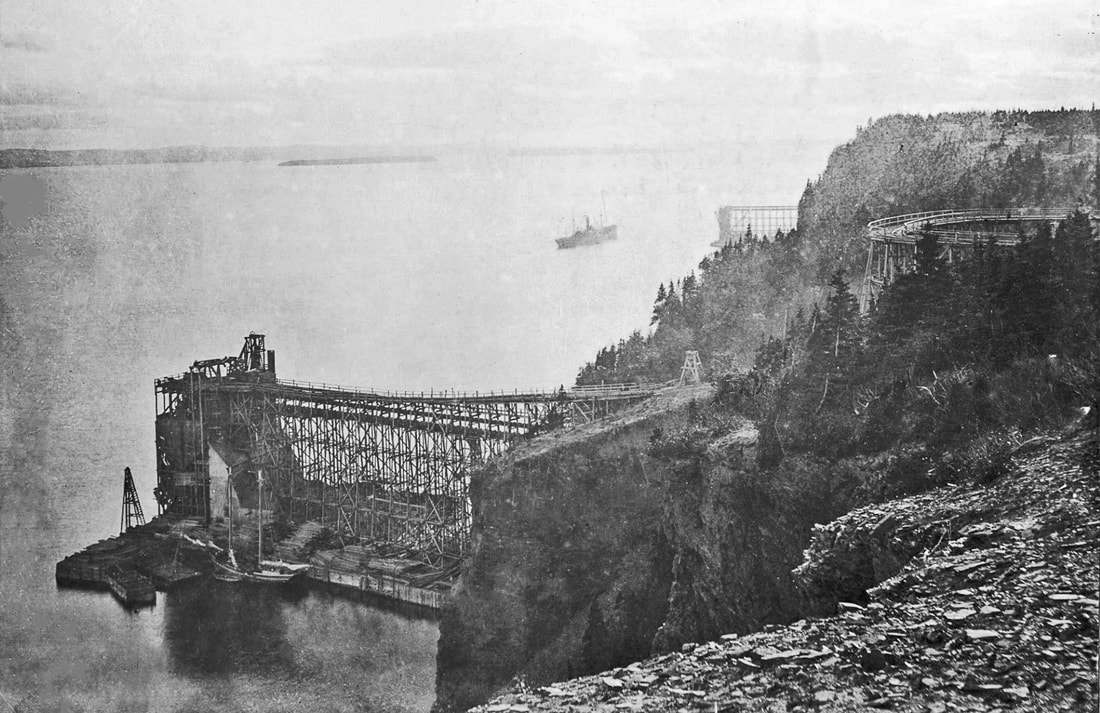
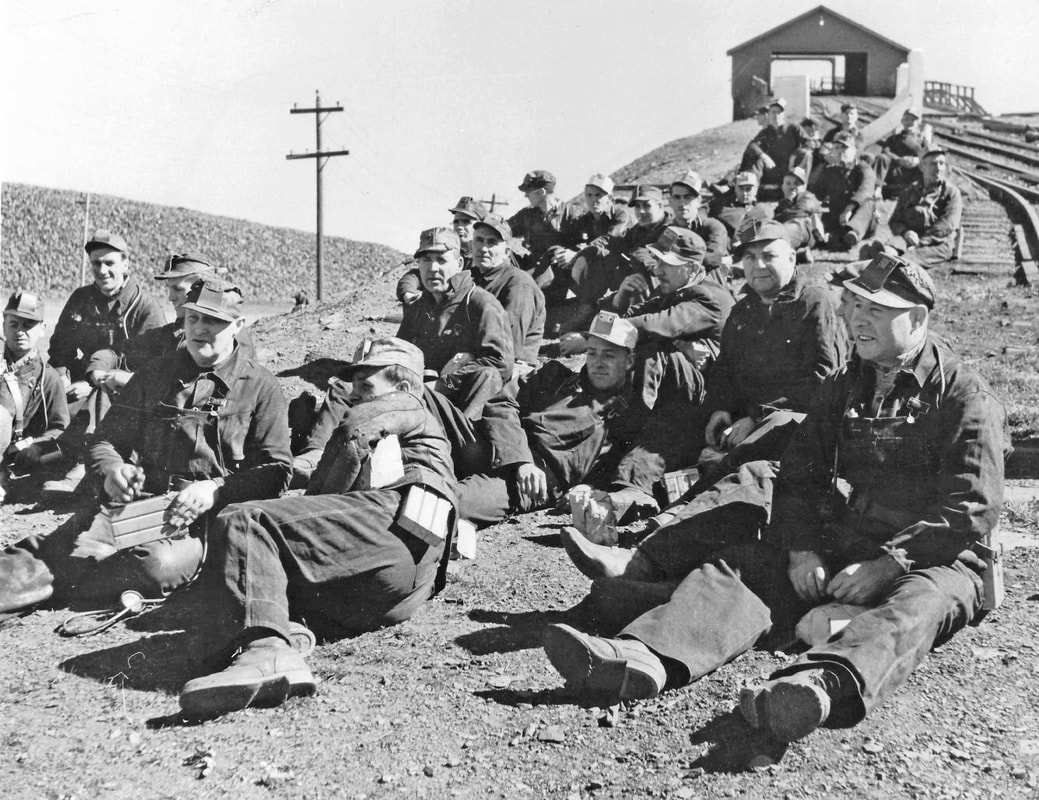
Events such as World War I and the Great Depression brought halts to Bell Island’s mining, but it would always come back stronger than ever. In 1927, a new contract with Germany was signed, bringing prosperity back to the industry. If not for Germany during the Depression years, the mines on Bell Island would’ve closed way earlier than expected.
After large surface ore deposits were found in other parts of Canada and cheaper foreign competition, the Wabana mines began closing one by one.
On June 30, 1966, the last submarine mine, No. 3, closed, which brought the end of mining on Bell Island after 71 years. In that time, around 79 million tons of ore had been shipped from the island. Naturally, the resource-driven industry of Bell Island suffered, and a large number of people moved to St. John’s.
World War II
Aside from Bell Island’s incredible mining history, it also had a flurry of activity during WWII. With the presence of the German Navy in Atlantic waters, the Newfoundland Militia was called into action to protect Bell Island’s resources. The majority of Bell Island’s ore was sent to Sydney, Nova Scotia, and represented around thirty percent of Canada’s productive capacity of steel at the time.
It’s common knowledge that German U-boats travelled as far as the St. Lawrence River to wreak havoc while the allies attempted to ship supplies overseas. The Canadians were concerned about the possibility of the enemy using bays along the coast as bases to attack their shipping ports.
Ultimately, this did little to help the eventual attacks against Bell Island. The anchorage used for bulk carriers sending iron ore to Europe was attacked on two occasions: September 5 and November 2, 1942. On September 5, four freighters loaded with ore were awaiting orders. Around noon, Saganaga, a British freighter, was struck by two torpedoes and sunk with multiple crew members. Minutes later, the Canadian freighter Lord Strathcona was also hit. Thankfully, the crew had already abandoned the ship, and no one was hurt.
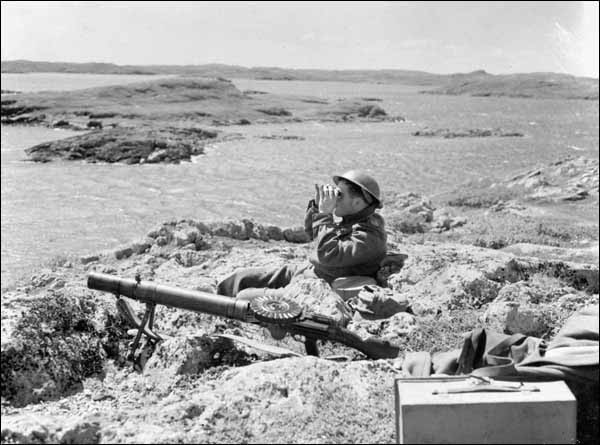
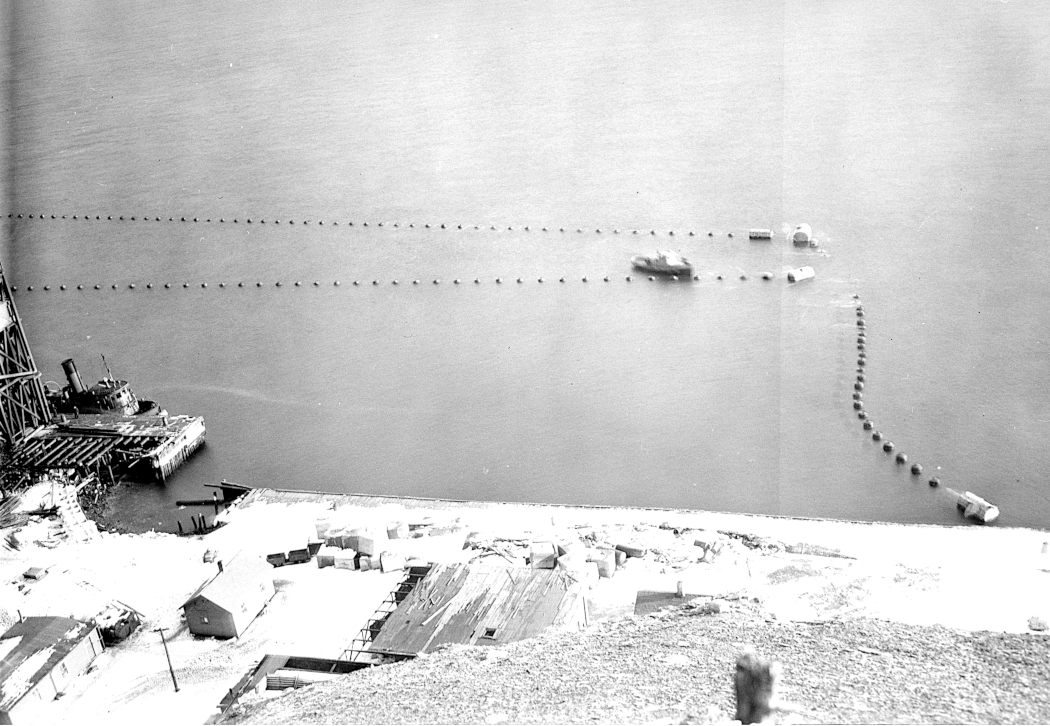
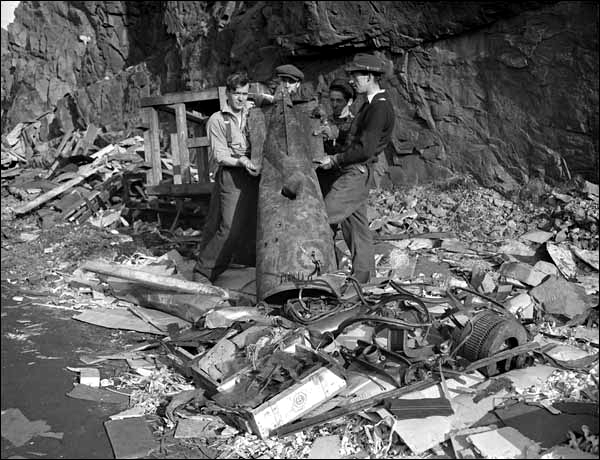
In the early morning of November 2, the Bell Island ore docks were hit again. This time it was the SS Rosecastle and The Free French ship PLM-27. The poor visibility helped shield the enemy U-boat as it made its way around the area. Over 70 lives were lost during these two tragic days.
On top of that, an errant German torpedo struck one of the Dominion Steel and Coal Company (DOSCO) loading dock, where iron ore was loaded onto ships. This makes Bell Island one of the only locations in North America to receive a direct attack from the German forces during WWII.
The Belle of the Bay Today
Just as other small towns have had to pivot their industry, so too has Bell Island. Bell Island Tourism and others around the island have begun to highlight the area’s history through murals, signs and other memorable tributes to what once stood on the island. One of the signs is a photo of my family’s meat market shop, which was known as a staple around town.
The Bell Island Community Museum is home to the #2 Mine Tour. The museum houses many photos and artifacts from Bell Island’s mining boom and allows you to travel through time to visit inside the actual #2 Mine.
Several walking tours around the island delve deeper into Bell Island’s history. These include the Haunted Walking Tour, the Grebe’s Nest Tour, the Historic Scotia and Dominion Tour and the Gregory Normore Coastal Trail.
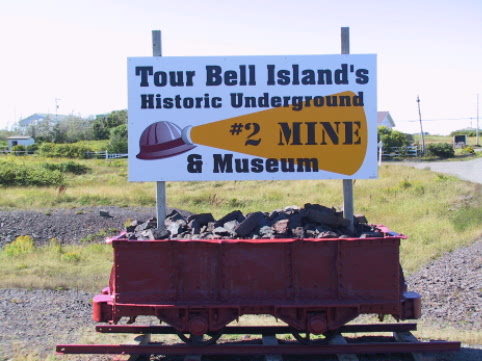
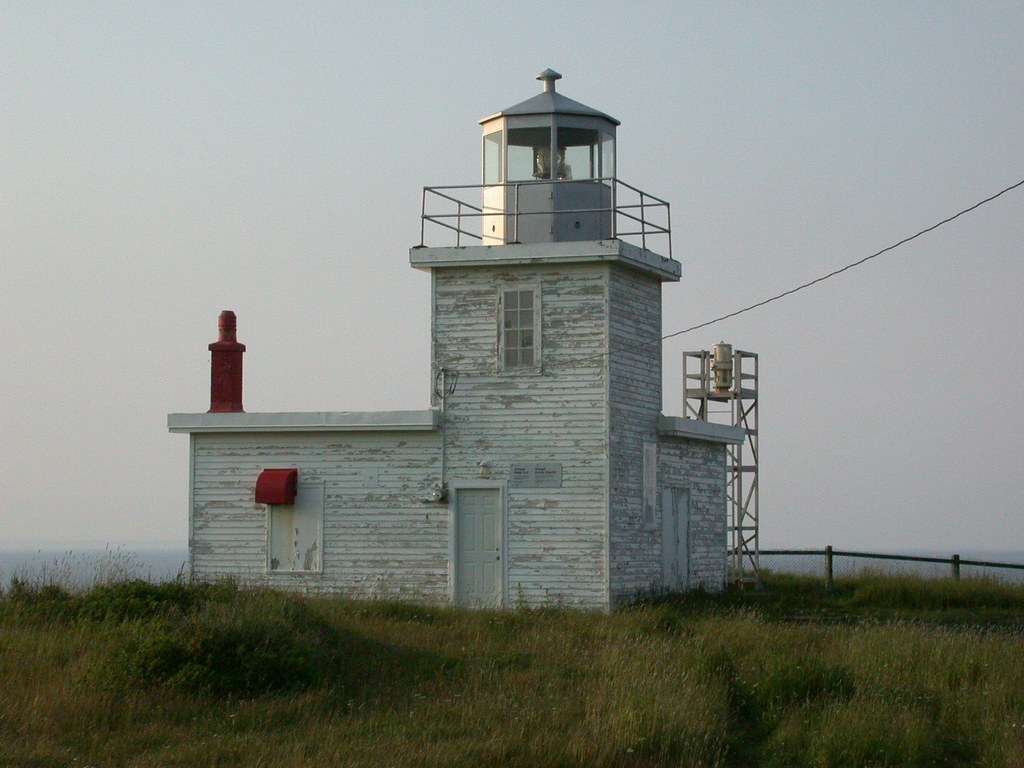

Dicks’ Fish and Chips and Keeper’s Cafe are great local spots to eat, each with views of the Bell Island Front and the Bell Island Lighthouse. The lighthouse, originally built in 1940 and replaced in 1966, stands 290-feet above sea level and has come to the rescue of many fishermen over the years.
Many locals enjoy discussing the island’s comings and goings over coffee and breakfast at The Coffee Shop before lining up for the ferry to head to work on the mainland; if the ferry is running on time, that is. The Bell Island Ferry has become known for its tardiness and reliability issues.
Bell Island holds many special memories for me. My grandfather and his family are from there, and I was able to visit for the first time in 2006. In the summer of 2021, I visited again and saw most of my family members I hadn’t seen since I was a young child. It was such an incredible experience, and I know I’ll be back soon.
I’ll see you next time in Delhi, Ontario!
Special thank you to my grandfather for providing me with a few books and stories of his time in Bell Island, and Gail Weir and Henry Crane for providing me with additional information and photos of Bell Island.


9 Comments
Doug McLean
I loved reading this article about Bell Island. My mother was born there, my grandfather was from there. I visited there back in 2001 and hopefully I can get back there soon, so I can go down the mine for a tour. Also have a cup of coffee too. Maybe some relatives there too.if there are some.
smalltowncanada
Hi Doug, thank you so much for reading! I love hearing people’s stories about their family connection to Bell Island so thank you for sharing. I wish you all the very best and hope you can visit again soon!
Jim Kelly
Thanks
Sandra Gosse
This is an interesting read totally enjoyed it. Both my grandparents on my parents side lived on Bell Island my parents grew up on the island. My father’s father was killed in the mines. My grandparents on my mother’s side lived on the beach and raised their family in the house which is known as the Coffee Shop today it was my grandparents home up until the late 1980’s. My grandmother originally had opened an ice cream shop which is known today as the coffee shop. As a young girl growing up in Portugal cove i would travel overseas to spend time with them. I have so many great memories of Bell Island and still visit each summer taking my grandchildren to explore my family roots. Such a beautiful place in my ❤️ heart.
smalltowncanada
Hi Sandra, thank you for your comment! What a wonderful bit of history your family has. I didn’t get a chance to visit the Coffee Shop when I was there but my brother went with my grandfather and great-uncle one of the mornings to enjoy breakfast. Thank you so much for sharing and for reading my article!
Clifford Claxton
Great article. My wife grew up on the island.
Her Father Dan Murphy worked in the mines.
Great history I believe it is the only place where a Uboat sunk three ore ships.
smalltowncanada
Thanks so much for reading!
Cheryl Parsons
Wonderful article and pictures. My husband was born in Wabana, Bell Island. His parents George & Lillian Parsons brought him to the states when he was 2. Dad was a house painter. I have done quite a bit of genealogy on the family. We visited in 1988 when our boys were teenagers. We loved it and I would would like to revisit with my grandchildren some day. Beautiful place.
smalltowncanada
Hi Cheryl, thank you so much for reading my work! Bell Island is a wonderful place and I hope you do get to revisit with your grandchildren. Learning more about family is extremely important and I’ve actually created a different video about my own family’s connection with Bell Island (https://youtu.be/VJxTPv-XdMA). Thank you again for sharing!